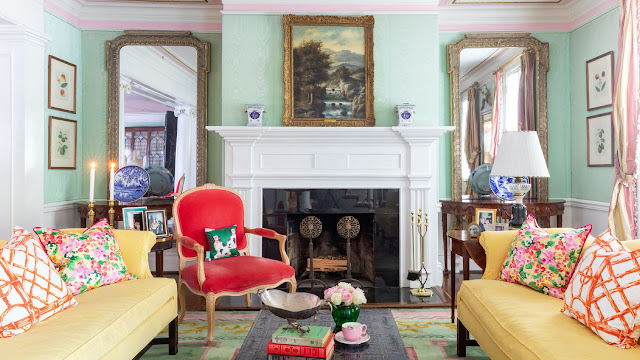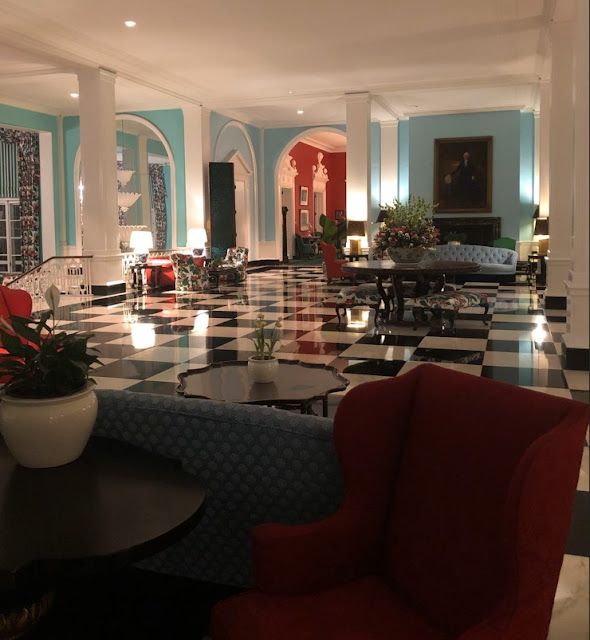In a previous post here, I wrote about a woman named Elsie de Wolfe who is considered to be the mother of Interior Design as a profession. Born in 1865 (although her Wiki page wonders if she was born in 1859), de Wolfe had many society friends who admired her work in her own home and asked for her services to brighten and refresh their own spaces. But it wasn't until 1905 that de Wolfe became known as a true, professional interior designer when famed New York City architect Stanford White was designing The Colony Club, a women's socialite club on Madison Avenue started by suffragettes, and brought de Wolfe in to design the interior spaces. Based on that success, she opened up her design studio on 5th Avenue.
However, a few years later, another driving force in Interior Design arrived in the form of one Dorothy Draper. She was born into the wealthy Tuckerman family in Tuxedo Park, NY in 1889 who divided time between three homes--a mansion in Tuxedo Park, a Manhattan townhouse, and a summer cottage in Newport, Rhode Island, as well as traveling to Europe for summers. Her class and milieu certainly formed her taste and in a 2006 New York Times article about Draper, Donald Albrecht, the curator of architecture and design at the Museum of the City of New York, said her "background not only provided Draper with a valuable network of clients and an innate sense of entitlement and authority, but also offered her a first-hand acquaintance with the historical styles that she would freely interpret and transform."
She championed a very specific aesthetic that was a blend of elements from Louis XIV, the wild ornamentation of Rococo, and a bit of neoclassicism from Louis XVI with contemporaneous elements and silhouettes from the 1920s. Her favorite color palette of red, green, powder blue, and yellow was offset by her penchant for cabbage-rose chintz, bamboo trellis and cabana stripe prints, palm frond wallcoverings, and black & white checked flooring. Her maximalist style came to be known as "Modern Baroque," or "Hollywood Regency" which can be seen in films from the 1920s all the way up to the 1950s. Her style can also be directly traced to the work of current designers like Kelly Wearstler and Johnathan Adler.
Draper's most famous project remains The Greenbrier, a massive resort in West Virginia dating from 1858 (!), that still prominently features her design sensibility. Draper was retained in 1946 to refresh and redecorate the resort, mingling her Modern Baroque flair with a Federalist style appropriate to the area. And while there have been changes over the years, the facility has not abandoned the original candy-colored schemes and details. Dorothy Draper is there in bright, full spirit. You can stay at The Greenbrier and see Draper's iconic work for yourself. Visit their site for information.
All following photos from The Greenbrier.
In 1964, Dorothy Draper sold her company to designer Carleton Varney who had worked closely with Draper for four years. He faithfully continued the legacy and style of Draper until his death in 2022 but Dorothy Draper and Company is still in operation.
Happy designing!
















No comments:
Post a Comment